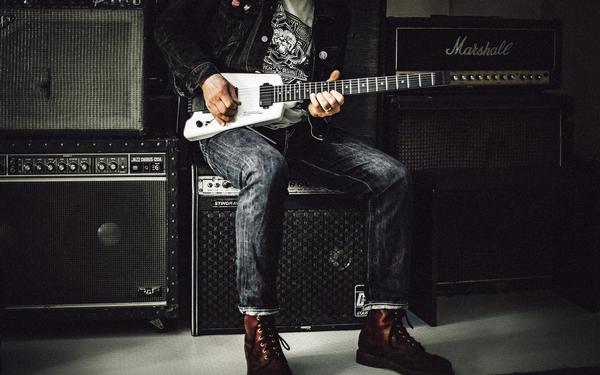Making the Most of Your Band’s Rehearsal Space
January 20, 2021
Practicing with your band is a crucial part of your band’s success—whether you are an up-and-coming artist or your band is already raking in the big bucks with high-paying gigs. It can be tempting to get right to the music without considering your band’s rehearsal space, but creating a pleasant, comfortable place to play can increase creativity.
Audio Quality
Before you bring even one piece of equipment into the rehearsal space, you need to figure out how to optimize the room for audio quality. Consider the size of the room as well as the materials the walls are made out of. If a speaker, drum, or combo amp is placed next to a brick wall, for instance, the direct and reflected sound coming from it might mean that another person will hear the sounds out of phase, causing cancellation or reinforcement. If the walls are all brick, the bass response will be far more powerful than a room with sheet-rocked walls. These factors need to be taken into account before you start setting up equipment.
Setting Up the Band
There are usually two different ways bands set themselves up in a rehearsal space: either facing each other (as in a circle) or facing out (as if the band is on stage). There are pros and cons to each setup.
Facing your bandmates can be helpful when you are new to practicing together. Not only can you hear each other better, but you can also detect visual cues. While there are advantages to jamming in a circle, there can also be drawbacks. If you become too accustomed to playing that way, suddenly playing for an audience from a stage where everyone is facing outward might throw you off.
Most experts suggest combining the two setups, so you get a feel for both. Face each other when you first start playing together but set up as if you are on stage once you feel like your set is pretty well dialed-in.
When determining the position of each member of the band in the room, the goal is to maximize the natural ambiance of their instrument’s rig without overpowering the rest of the band.
If everyone in the band is wearing headphones, you can skip paying for loudspeakers. Check out this article to find out if personal monitoring solutions might be right for your band.
Taking the time to create a music rehearsal space that works for every member of your band will help keep everyone happy and minimize tension. If you’re looking for a great music rehearsal space, learn more at Soundstructure. We have two locations, for musicians in Kansas City and Denver.
Go Back Audio Quality
Before you bring even one piece of equipment into the rehearsal space, you need to figure out how to optimize the room for audio quality. Consider the size of the room as well as the materials the walls are made out of. If a speaker, drum, or combo amp is placed next to a brick wall, for instance, the direct and reflected sound coming from it might mean that another person will hear the sounds out of phase, causing cancellation or reinforcement. If the walls are all brick, the bass response will be far more powerful than a room with sheet-rocked walls. These factors need to be taken into account before you start setting up equipment.
Setting Up the Band
There are usually two different ways bands set themselves up in a rehearsal space: either facing each other (as in a circle) or facing out (as if the band is on stage). There are pros and cons to each setup.
Facing your bandmates can be helpful when you are new to practicing together. Not only can you hear each other better, but you can also detect visual cues. While there are advantages to jamming in a circle, there can also be drawbacks. If you become too accustomed to playing that way, suddenly playing for an audience from a stage where everyone is facing outward might throw you off.
Most experts suggest combining the two setups, so you get a feel for both. Face each other when you first start playing together but set up as if you are on stage once you feel like your set is pretty well dialed-in.
When determining the position of each member of the band in the room, the goal is to maximize the natural ambiance of their instrument’s rig without overpowering the rest of the band.
- Start with the drummer, who should be at the back and center of the room. This will keep some distance between the drums and the walls, helping to minimize reflections from surfaces.
- Guitars and bass amps should also be at the back of the room, so guitarists and bassists can put some space between them and the amps. Letting them be further away from their amps will actually help them hear the music better.
If everyone in the band is wearing headphones, you can skip paying for loudspeakers. Check out this article to find out if personal monitoring solutions might be right for your band.
Taking the time to create a music rehearsal space that works for every member of your band will help keep everyone happy and minimize tension. If you’re looking for a great music rehearsal space, learn more at Soundstructure. We have two locations, for musicians in Kansas City and Denver.
